Azlan Iqbal
A Novel Machine Learning Method for Preference Identification
Oct 22, 2020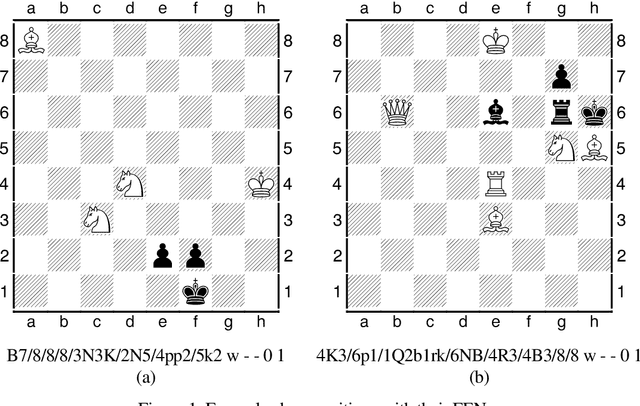
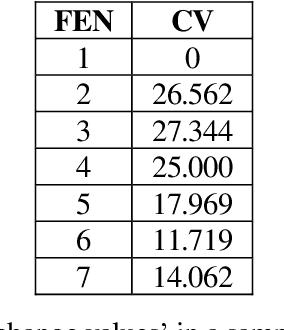
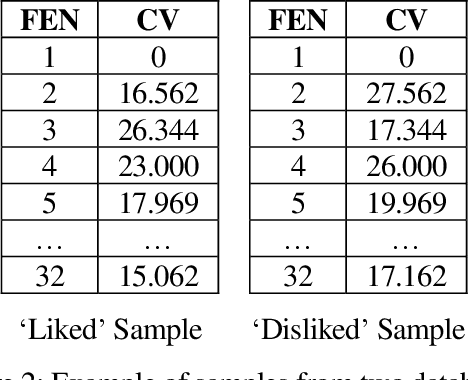
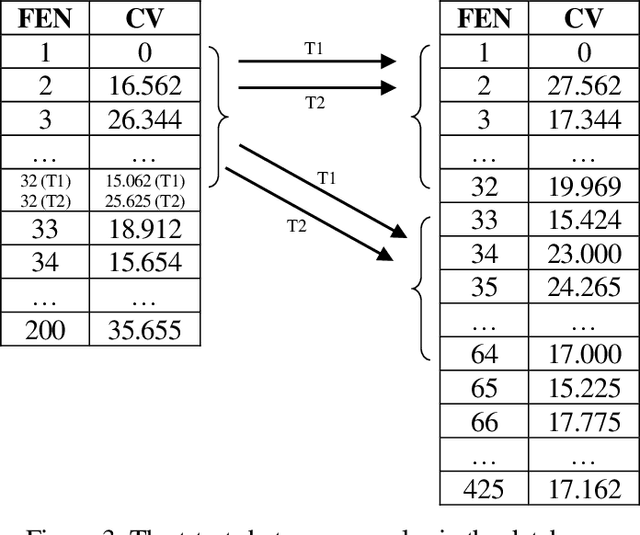
Abstract:Human preference or taste within any domain is usually a difficult thing to identify or predict with high probability. In the domain of chess problem composition, the same is true. Traditional machine learning approaches tend to focus on the ability of computers to process massive amounts of data and continuously adjust 'weights' within an artificial neural network to better distinguish between say, two groups of objects. Contrasted with chess compositions, there is no clear distinction between what constitutes one and what does not; even less so between a good one and a poor one. We propose a computational method that is able to learn from existing databases of 'liked' and 'disliked' compositions such that a new and unseen collection can be sorted with increased probability of matching a solver's preferences. The method uses a simple 'change factor' relating to the Forsyth-Edwards Notation (FEN) of each composition's starting position, coupled with repeated statistical analysis of sample pairs from both databases. Tested using the author's own collections of computer-generated chess problems, the experimental results showed that the method was able to sort a new and unseen collection of compositions such that, on average, over 70% of the preferred compositions were in the top half of the collection. This saves significant time and energy on the part of solvers as they are likely to find more of what they like sooner. The method may even be applicable to other domains such as image processing because it does not rely on any chess-specific rules but rather just a sufficient and quantifiable 'change' in representation from one object to the next.
An Algorithm for Automatically Updating a Forsyth-Edwards Notation String Without an Array Board Representation
Sep 02, 2020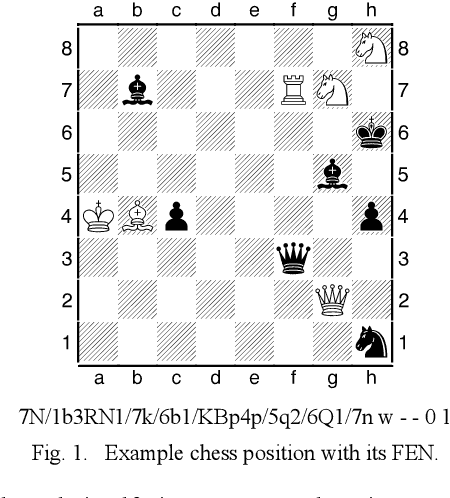
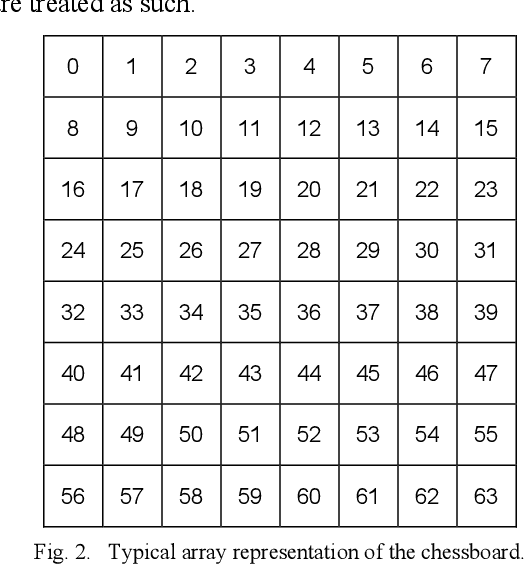
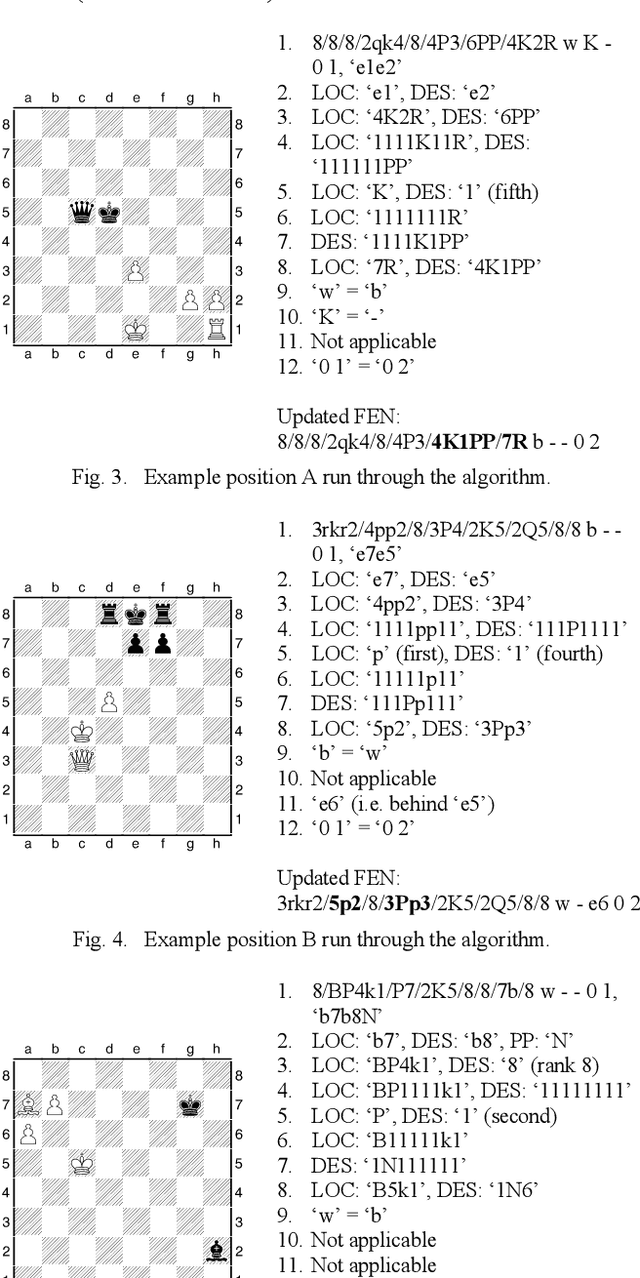
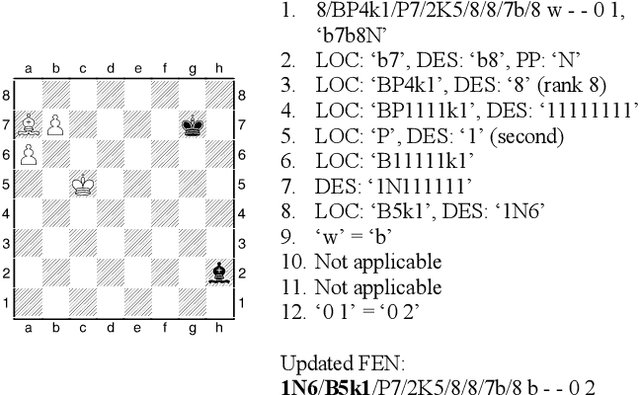
Abstract:We present an algorithm that correctly updates the Forsyth-Edwards Notation (FEN) chessboard character string after any move is made without the need for an intermediary array representation of the board. In particular, this relates to software that have to do with chess, certain chess variants and possibly even similar board games with comparable position representation. Even when performance may be equal or inferior to using arrays, the algorithm still provides an accurate and viable alternative to accomplishing the same thing, or when there may be a need for additional or side processing in conjunction with arrays. Furthermore, the end result (i.e. an updated FEN string) is immediately ready for export to any other internal module or external program, unlike with an intermediary array which needs to be first converted into a FEN string for export purposes. The algorithm is especially useful when there are no existing array-based modules to represent a visual board as it can do without them entirely. We provide examples that demonstrate the correctness of the algorithm given a variety of positions involving castling, en passant and pawn promotion.
The Effects of Quantum Randomness on a System Exhibiting Computational Creativity
Aug 28, 2020
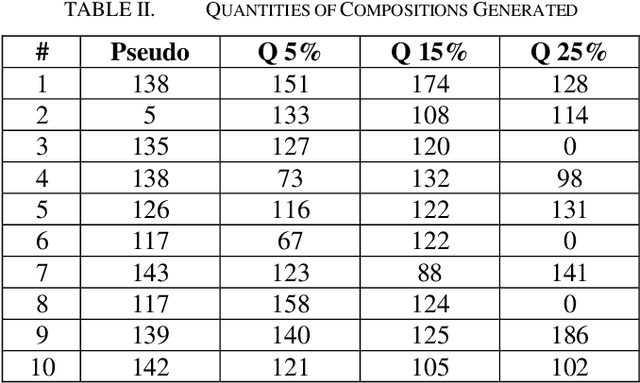

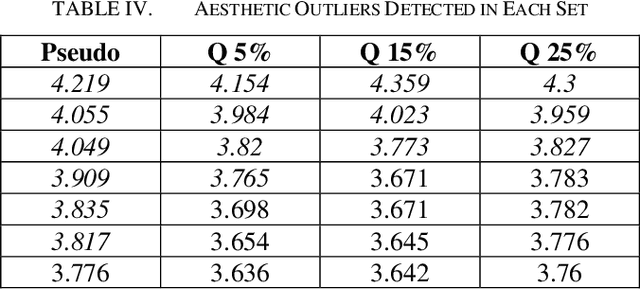
Abstract:We present experimental results on the effects of using quantum or 'truly' random numbers, as opposed to pseudorandom numbers, in a system that exhibits computational creativity (given its ability to compose original chess problems). The results indicate that using quantum random numbers too often or too seldom in the composing process does not have any positive effect on the output generated. Interestingly, there is a 'sweet spot' of using quantum random numbers 15% of the time that results in fewer statistical outliers. Overall, it would appear that there may indeed be a slight advantage to using quantum random numbers in such a system and this may also be true in other systems that exhibit computational creativity. The benefits of doing so should, however, be weighed against the overhead of obtaining quantum random numbers in contrast to a pseudorandom number generator that is likely more convenient to incorporate.
Estimating Total Search Space Size for Specific Piece Sets in Chess
Feb 27, 2018Abstract:Automatic chess problem or puzzle composition typically involves generating and testing various different positions, sometimes using particular piece sets. Once a position has been generated, it is then usually tested for positional legality based on the game rules. However, it is useful to be able to estimate what the search space size for particular piece combinations is to begin with. So if a desirable chess problem was successfully generated by examining 'merely' 100,000 or so positions in a theoretical search space of about 100 billion, this would imply the composing approach used was quite viable and perhaps even impressive. In this article, I explain a method of calculating the size of this search space using a combinatorics and permutations approach. While the mathematics itself may already be established, a precise method and justification of applying it with regard to the chessboard and chess pieces has not been documented, to the best of our knowledge. Additionally, the method could serve as a useful starting point for further estimations of search space size which filter out positions for legality and rotation, depending on how the automatic composer is allowed to place pieces on the board (because this affects its total search space size).
A Computer Composes A Fabled Problem: Four Knights vs. Queen
Sep 04, 2017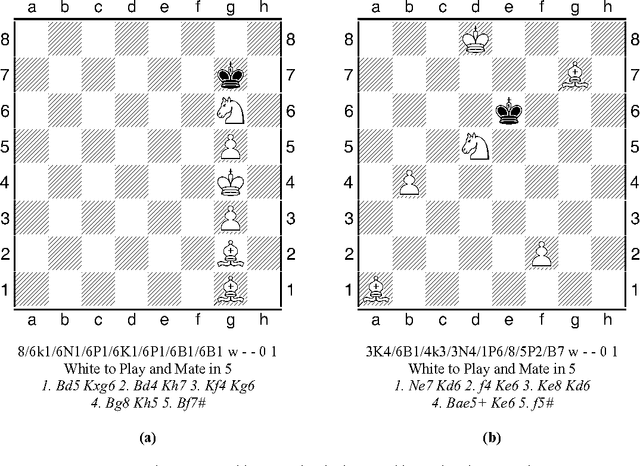
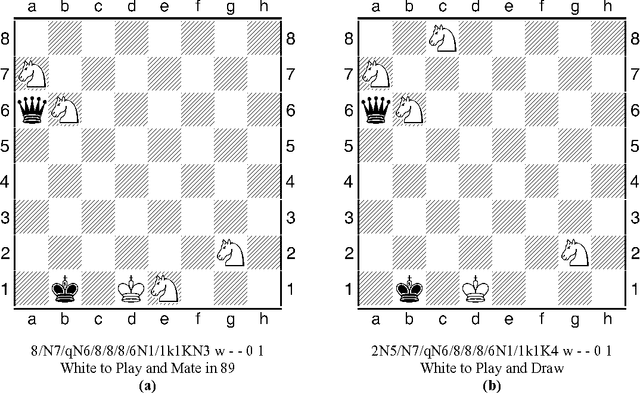
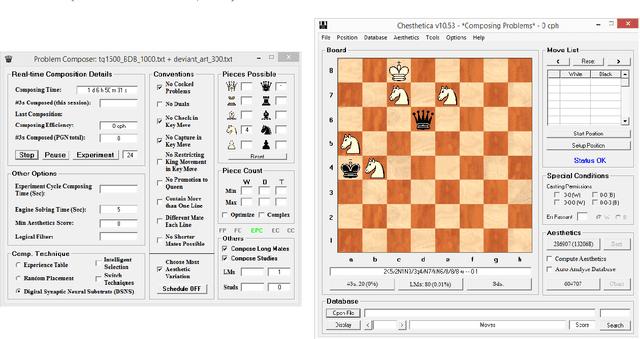
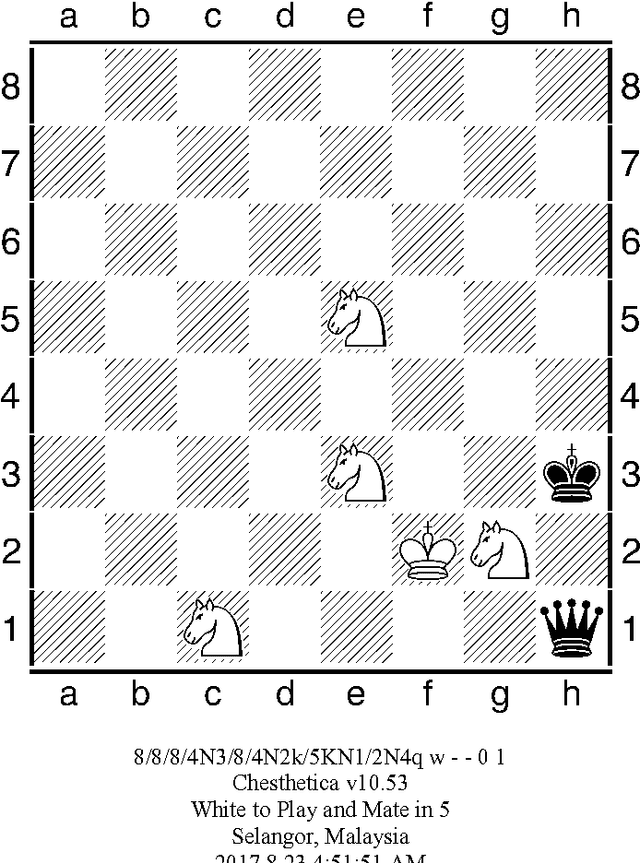
Abstract:We explain how the prototype automatic chess problem composer, Chesthetica, successfully composed a rare and interesting chess problem using the new Digital Synaptic Neural Substrate (DSNS) computational creativity approach. This problem represents a greater challenge from a creative standpoint because the checkmate is not always clear and the method of winning even less so. Creating a decisive chess problem of this type without the aid of an omniscient 7-piece endgame tablebase (and one that also abides by several chess composition conventions) would therefore be a challenge for most human players and composers working on their own. The fact that a small computer with relatively low processing power and memory was sufficient to compose such a problem using the DSNS approach in just 10 days is therefore noteworthy. In this report we document the event and result in some detail. It lends additional credence to the DSNS as a viable new approach in the field of computational creativity. In particular, in areas where human-like creativity is required for targeted or specific problems with no clear path to the solution.
A Chain-Detection Algorithm for Two-Dimensional Grids
Oct 12, 2016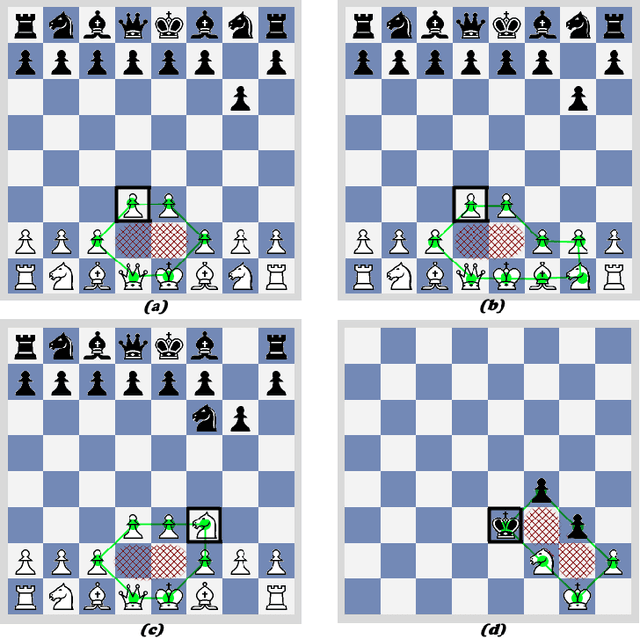
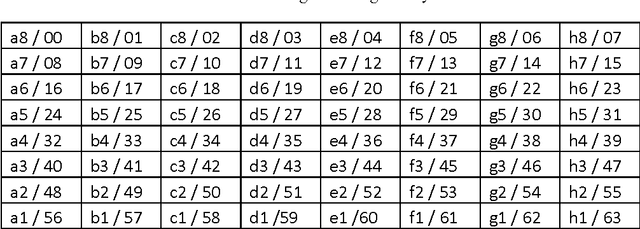

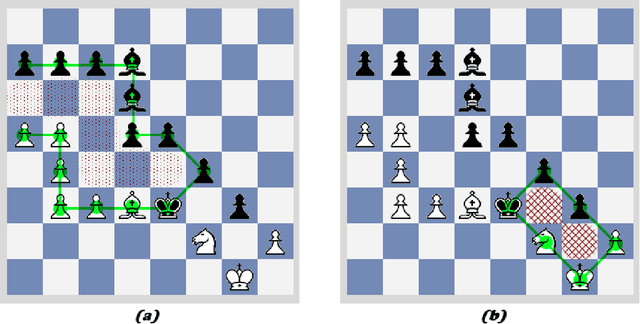
Abstract:We describe a general method of detecting valid chains or links of pieces on a two-dimensional grid. Specifically, using the example of the chess variant known as Switch-Side Chain-Chess (SSCC). Presently, no foolproof method of detecting such chains in any given chess position is known and existing graph theory, to our knowledge, is unable to fully address this problem either. We therefore propose a solution implemented and tested using the C++ programming language. We have been unable to find an incorrect result and therefore offer it as the most viable solution thus far to the chain-detection problem in this chess variant. The algorithm is also scalable, in principle, to areas beyond two-dimensional grids such as 3D analysis and molecular chemistry.
How Relevant Are Chess Composition Conventions?
Sep 21, 2016
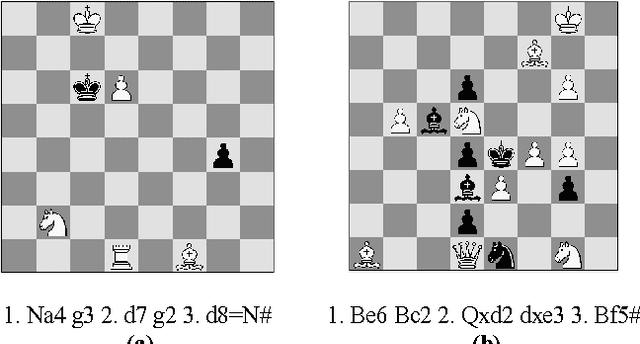
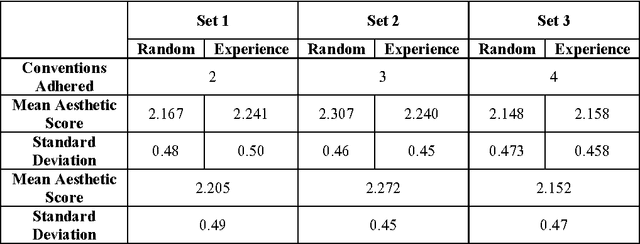
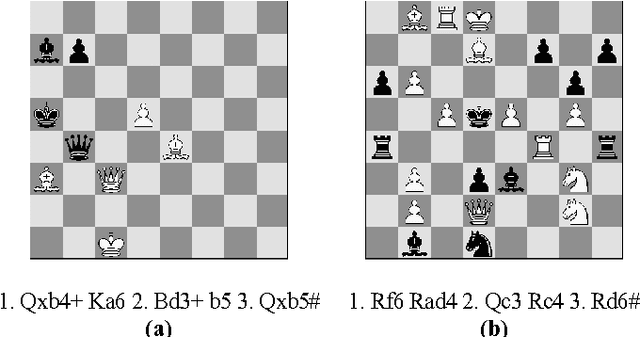
Abstract:Composition conventions are guidelines used by human composers in composing chess problems. They are particularly significant in composition tournaments. Examples include, not having any check in the first move of the solution and not dressing up the board with unnecessary pieces. Conventions are often associated or even directly conflated with the overall aesthetics or beauty of a composition. Using an existing experimentally-validated computational aesthetics model for three-move mate problems, we analyzed sets of computer-generated compositions adhering to at least 2, 3 and 4 comparable conventions to test if simply conforming to more conventions had a positive effect on their aesthetics, as is generally believed by human composers. We found slight but statistically significant evidence that it does, but only to a point. We also analyzed human judge scores of 145 three-move mate problems composed by humans to see if they had any positive correlation with the computational aesthetic scores of those problems. We found that they did not. These seemingly conflicting findings suggest two main things. First, the right amount of adherence to composition conventions in a composition has a positive effect on its perceived aesthetics. Second, human judges either do not look at the same conventions related to aesthetics in the model used or emphasize others that have less to do with beauty as perceived by the majority of players, even though they may mistakenly consider their judgements beautiful in the traditional, non-esoteric sense. Human judges may also be relying significantly on personal tastes as we found no correlation between their individual scores either.
The Digital Synaptic Neural Substrate: Size and Quality Matters
Sep 20, 2016
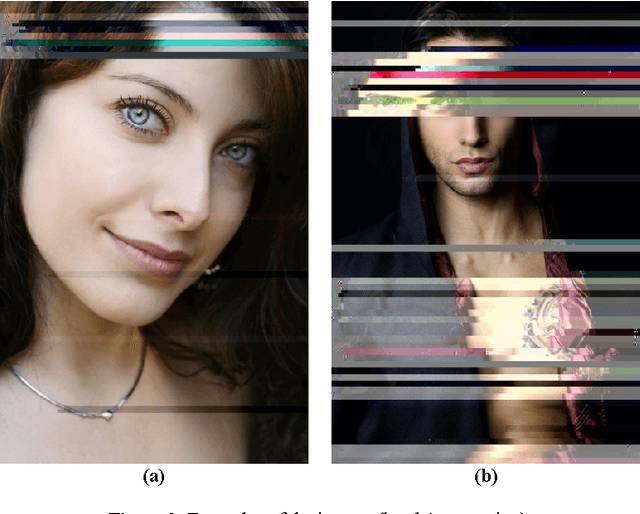
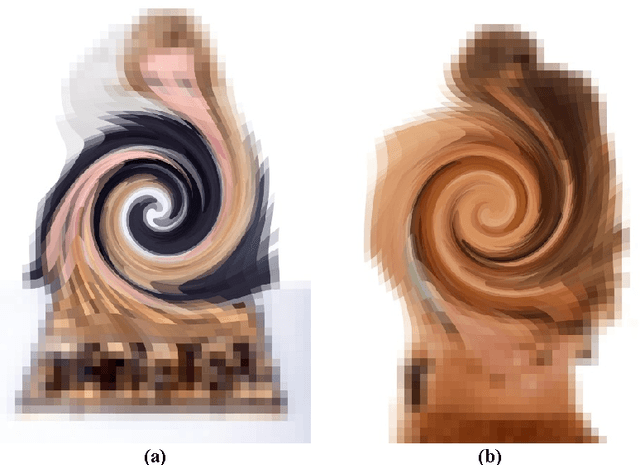
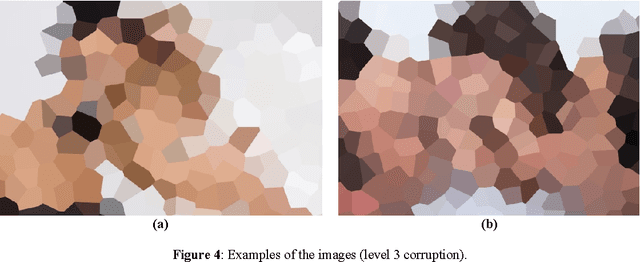
Abstract:We investigate the 'Digital Synaptic Neural Substrate' (DSNS) computational creativity approach further with respect to the size and quality of images that can be used to seed the process. In previous work we demonstrated how combining photographs of people and sequences taken from chess games between weak players can be used to generate chess problems or puzzles of higher aesthetic quality, on average, compared to alternative approaches. In this work we show experimentally that using larger images as opposed to smaller ones improves the output quality even further. The same is also true for using clearer or less corrupted images. The reasons why these things influence the DSNS process is presently not well-understood and debatable but the findings are nevertheless immediately applicable for obtaining better results.
The Digital Synaptic Neural Substrate: A New Approach to Computational Creativity
Sep 20, 2016

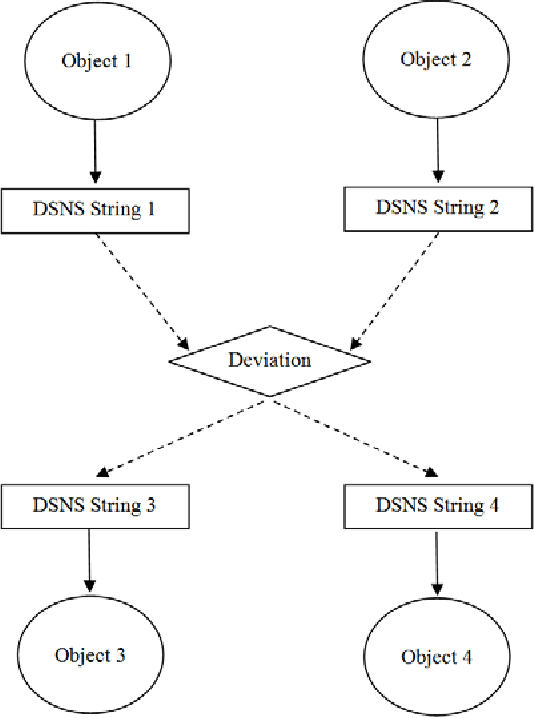

Abstract:We introduce a new artificial intelligence (AI) approach called, the 'Digital Synaptic Neural Substrate' (DSNS). It uses selected attributes from objects in various domains (e.g. chess problems, classical music, renowned artworks) and recombines them in such a way as to generate new attributes that can then, in principle, be used to create novel objects of creative value to humans relating to any one of the source domains. This allows some of the burden of creative content generation to be passed from humans to machines. The approach was tested in the domain of chess problem composition. We used it to automatically compose numerous sets of chess problems based on attributes extracted and recombined from chess problems and tournament games by humans, renowned paintings, computer-evolved abstract art, photographs of people, and classical music tracks. The quality of these generated chess problems was then assessed automatically using an existing and experimentally-validated computational chess aesthetics model. They were also assessed by human experts in the domain. The results suggest that attributes collected and recombined from chess and other domains using the DSNS approach can indeed be used to automatically generate chess problems of reasonably high aesthetic quality. In particular, a low quality chess source (i.e. tournament game sequences between weak players) used in combination with actual photographs of people was able to produce three-move chess problems of comparable quality or better to those generated using a high quality chess source (i.e. published compositions by human experts), and more efficiently as well. Why information from a foreign domain can be integrated and functional in this way remains an open question for now. The DSNS approach is, in principle, scalable and applicable to any domain in which objects have attributes that can be represented using real numbers.
 Add to Chrome
Add to Chrome Add to Firefox
Add to Firefox Add to Edge
Add to Edge